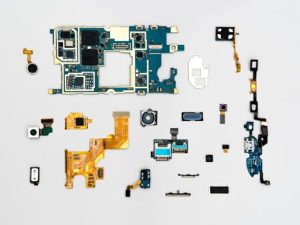Tech for Aging in Place: Gadgets for Independent Living
)
As people age, their physical abilities may decline and they may face challenges in performing daily tasks. However, with the advancements in technology, there are now numerous gadgets available that can help seniors live independently and comfortably in their own homes. These gadgets, also known as assistive technology, provide solutions to common problems faced by seniors, making aging in place a more viable and attractive option. In this article, we will discuss some of the top tech gadgets for aging in place that can improve the quality of life for seniors.
The Rise of Aging in Place
Aging in place refers to the concept of seniors living in their own homes as they age, rather than moving to an assisted living facility or a retirement home. According to the AARP, 87% of adults over the age of 65 want to stay in their current home and community as they age. Aging in place allows seniors to maintain their independence, have control over their daily routine, and stay connected with their social circles.
However, the challenges of aging, such as mobility and memory issues, can make it difficult for seniors to live independently. This is where technology comes in as a helpful aid to assist seniors in their day-to-day activities.
Assistive Technology for Independent Living
Smart Home Devices
Smart home devices are becoming increasingly popular among seniors. These devices can be controlled by voice commands or through a smartphone, making it easier for seniors to operate them. From turning on/off lights, adjusting the thermostat, to locking/unlocking doors, these devices can help seniors manage their home without much physical effort.
Some popular smart devices for aging in place include Amazon Echo, Google Home, and Apple HomePod. These devices can also be programmed to set reminders for medication or appointments, provide news and weather updates, and even play audiobooks for entertainment.
Medical Alert Systems
Medical alert systems are designed to help seniors call for help in case of a fall or a medical emergency. These devices come with a wearable pendant or a bracelet that can be easily activated by pressing a button. Once activated, the system will automatically alert a designated emergency contact or a monitoring center who can send help immediately.
Some medical alert systems also come with additional features such as fall detection, which can automatically send an alert if a fall is detected, and GPS tracking, which can help locate a senior in case they wander off or get lost.
Automated Medication Dispensers
For seniors who have trouble remembering to take their medication, automated medication dispensers can be a useful gadget. These devices are pre-programmed to dispense the right medication dosage at the right time of the day. They can also be set to remind seniors when it’s time to take their pills.
Automated medication dispensers can also be connected to a caregiver’s phone, allowing them to monitor their loved one’s medication intake remotely. This can provide peace of mind for both the seniors and their caregivers.
Fall Detection and Prevention Devices
Falls are a common concern for seniors, and they can have serious consequences. That’s why there are now various gadgets available to detect falls and prevent them. These include wearable devices such as smartwatches that can track activity and alert seniors when they have been sedentary for too long. There are also mobility aids such as cane and walker sensors that can detect changes in gait and prevent falls.
Additionally, there are various home modifications such as grab bars, handrails, and non-slip mats that can also prevent falls and make a home more senior-friendly.
Final Thoughts
The advancements in technology have made it easier for seniors to age in place safely and comfortably. These gadgets not only provide practical solutions to daily challenges but also help seniors maintain their independence and improve their quality of life. Whether it’s a smart home device or an assistive medical device, there is a wide range of options available to cater to the specific needs and preferences of seniors. With the help of technology, aging in place can be a viable and desirable option for many seniors.
Remember, before purchasing any assistive technology, it’s important to consider the needs and capabilities of the senior and consult with a professional if needed. With the right gadgets, seniors can continue to live independently and happily in their own homes for years to come.









